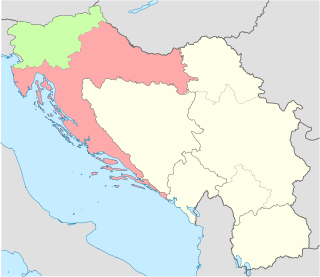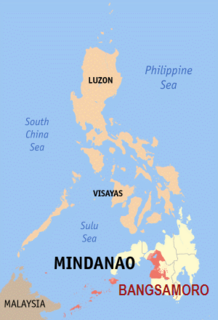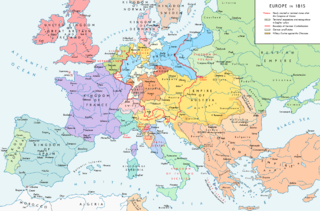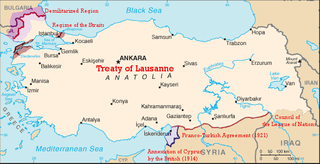 W
WA peace treaty is an agreement between two or more hostile parties, usually countries or governments, which formally ends a state of war between the parties. It is different from an armistice, which is an agreement to stop hostilities; a surrender, in which an army agrees to give up arms; or a ceasefire or truce, in which the parties may agree to temporarily or permanently stop fighting. The art of negotiating a peace treaty in the modern era has been referred to by legal scholar Christine Bell as the lex pacificatoria, with a peace treaty potentially contributing to the legal framework governing the post conflict period, or jus post bellum.
 W
WThe Treaty of Aberconwy was signed in 1277 by King Edward I of England and Llewelyn the Last, Prince of Wales, following Edward’s invasion of Llewelyn’s territories earlier that year. The treaty granted peace between the two but also essentially guaranteed that Welsh self-rule would end upon Llewelyn's death and represented the completion of the first stage of the Conquest of Wales by Edward I.
 W
WThe Abidjan Peace Accord was a treaty signed in Abidjan, Côte d'Ivoire on 30 November 1996 to try to bring an end to the Sierra Leone Civil War (1991–2002). The two main signatories were President Ahmad Tejan Kabbah of Sierra Leone and Foday Sankoh, leader of the Revolutionary United Front (RUF) rebel group. However, Sankoh refused to honour the terms of the agreement, and Kabbah was forced into exile by a May 1997 military coup, so the Accord failed to bring about peace.
 W
WThe Declaratio Ferdinandei was a clause in the Peace of Augsburg, signed in 1555 to end conflicts between Catholics and Protestants within the Holy Roman Empire. The Peace created the principle of Cuius regio, eius religio, which meant that the religion of the ruler decided the religion of the inhabitants. The Declaratio Ferdinandei exempted knights and some of the cities under the jurisdiction of an ecclesiastical prince if they had practiced Lutheranism for some time. The provision was not publicized as part of the treaty, and was kept secret for almost two decades.
 W
WThe Peace of Augsburg, also called the Augsburg Settlement, was a treaty between Charles V, Holy Roman Emperor, and the Schmalkaldic League, signed in September 1555 at the imperial city of Augsburg. It officially ended the religious struggle between the two groups and made the legal division of Christianity permanent within the Holy Roman Empire, allowing rulers to choose either Lutheranism or Roman Catholicism as the official confession of their state. However, the Peace of Augsburg arrangement is also credited with ending much Christian unity around Europe. Calvinism was not allowed until the Peace of Westphalia.
 W
WThe reservatum ecclesiasticum was a provision of the Peace of Augsburg of 1555. It exempted ecclesiastical lands from the principle of cuius regio, eius religio, which the Peace established for all hereditary dynastic lands, such as those ruled by princes or dukes. Under this principle, the religion of the ruler would be the religion of the country and of its people, those being his possession by inheritance.
 W
WThe Brioni Agreement or Brioni Declaration is a document signed by representatives of Slovenia, Croatia, and Yugoslavia under the political sponsorship of the European Community (EC) on the Brijuni Islands on 7 July 1991. The agreement sought to create an environment in which further negotiations on the future of Yugoslavia could take place. However, ultimately it isolated the federal prime minister Ante Marković in his efforts to preserve Yugoslavia, and effectively stopped any form of federal influence over Slovenia. This meant the Yugoslav People's Army (JNA) would focus on combat in Croatia, creating a precedent of redrawing international borders and staking the EC's interest in resolving the Yugoslav crisis.
 W
WThe Byzantine–Venetian treaty of 1268 was an agreement between the Byzantine Empire and the Republic of Venice that brought to a temporary end the hostilities between the two powers which had erupted after the Byzantine recovery of Constantinople by emperor Michael VIII Palaiologos in 1261.
 W
WThe idea of the Common Peace was one of the most influential concepts of 4th century BC Greek political thought, along with the idea of Panhellenism. The term described both the concept of a desirable, permanent peace between the Greek city-states (poleis) and a sort of peace treaty which fulfilled the three fundamental criteria of this concept: it had to include all the Greek city-states, it had to recognise the autonomy and equality of all city states without regard for their military power, and it had to be intended to remain in force permanently.
 W
WThe Comprehensive Agreement on Bangsamoro (CAB) is a final peace agreement signed between the Government of the Philippines and the Moro Islamic Liberation Front on March 27, 2014 at the Malacañang Palace in Manila. Under the agreement, the Islamic separatists would turn over their firearms to a third party, which would be selected by the rebels and the Philippine government. The MILF agreed to decommission its armed wing, the Bangsamoro Islamic Armed Forces (BIAF). In return, the government would establish an autonomous Bangsamoro. Power sharing was a central point to the autonomy redesign.
 W
WThe Congress of Vienna of 1814–1815 was one of the most important international conferences in European history. It remade Europe after the downfall of the French Emperor Napoleon I. It was a meeting of ambassadors of European states chaired by Austrian statesman Klemens von Metternich, and held in Vienna from November 1814 to June 1815. The objective of Congress was to provide a long-term peace plan for Europe by settling critical issues arising from the French Revolutionary Wars and the Napoleonic Wars. The goal was not simply to restore old boundaries but to resize the main powers so they could balance each other and remain at peace. The leaders were conservatives with little use for republicanism or revolution, both of which threatened to upset the status quo in Europe. France lost all its recent conquests while Prussia, Austria and Russia made major territorial gains. Prussia added smaller German states in the west, Swedish Pomerania, and 60% of the Kingdom of Saxony; Austria gained Venice and much of northern Italy. Russia gained parts of Poland. The new Kingdom of the Netherlands had been created just months before and included formerly Austrian territory that in 1830 became Belgium.
 W
WThe General Framework Agreement for Peace in Bosnia and Herzegovina, also known as the Dayton Agreement or the Dayton Accords, is the peace agreement reached at Wright-Patterson Air Force Base near Dayton, Ohio, United States, on 21 November 1995, and formally signed in Paris, on 14 December 1995. These accords put an end to the three-and-a-half-year-long Bosnian War, one of the Yugoslav Wars.
 W
WThe Ebro Treaty was a treaty signed in 226 BC by Hasdrubal the Fair of Carthage and the Roman Republic, which fixed the river Ebro in Iberia as the boundary between the two powers of Rome and Carthage. Under the terms of the treaty, Carthage would not expand north of the Ebro, as long as Rome likewise did not expand to the south of the river.
 W
WThe Treaty of Eger, also called Main Compromise of Eger or Peace of Eger was concluded on 25 April 1459 in the Imperial City of Eger (Cheb), administrative seat of the immediate pawn of Egerland. The treaty established the border between the Kingdom of Bohemia and the Electorate of Saxony on the main ridge of the Ore Mountains stretching from Eger to the River Elbe. The border remains largely unchanged up to today, separating the Czech Republic and Germany, and is thus one of the oldest still extant borders in Europe.
 W
WThe Framework Agreement on the Bangsamoro is a preliminary peace agreement signed in the Malacañan Palace in Manila, Philippines on October 15, 2012. The agreement calls for the creation of an autonomous political entity named Bangsamoro, replacing the Autonomous Region in Muslim Mindanao (ARMM) which was described by Former President Benigno Aquino III as "a failed experiment".
 W
WThe Treaty of Gerstungen was concluded on 2 February 1074 in Gerstungen Castle on the River Werra in what is now Germany. It required King Henry IV to restore Duke Otto of Northeim to the Duchy of Bavaria. In 1073 the latter had successfully headed the rebellion of the Saxons. King Henry had to escape from the siege of the Harzburg castle and, under the requirements of the treaty, to accede to the slighting of his castles in the Harz mountains, including for example, the Sachsenburg at Bad Sachsa and only built in 1070.
 W
WIn 661 CE, after Ali's assassination, Hasan ibn Ali attained to the caliphate. There was a military conflict between Caliph Ali and Muawiya ibn Abu Sufyan ; But upon the insistence of Muawiya, Hasan signed the Hasan–Muawiya treaty with Muawiyah. According to the treaty, Hasan ceded the caliphate to Muawiyah but the latter could name no successor during his reign; instead, he was to let the Islamic world choose its successor afterward.
 W
WThe Israel–Jordan peace treaty, sometimes referred to as the Wadi Araba Treaty, is an agreement that ended the state of war that has existed between the two countries since the 1948 Arab–Israeli War and established mutual diplomatic relations. In addition to establishing peace between the two countries, the treaty also settled land and water disputes, provided for broad cooperation in tourism and trade, and obligated both countries to prevent their territory being used as a staging ground for military strikes by a third country.
 W
WThe Kellogg–Briand Pact is a 1928 international agreement in which signatory states promised not to use war to resolve "disputes or conflicts of whatever nature or of whatever origin they may be, which may arise among them". There were no mechanisms for enforcement. Parties failing to abide by this promise "should be denied of the benefits furnished by [the] treaty". It was signed by Germany, France, and the United States on 27 August 1928, and by most other states soon after. Sponsored by France and the U.S., the Pact renounced the use of war and calls for the peaceful settlement of disputes. Similar provisions were incorporated into the Charter of the United Nations and other treaties, and it became a stepping-stone to a more activist American policy. It is named after its authors, United States Secretary of State Frank B. Kellogg and French foreign minister Aristide Briand. The pact was concluded outside the League of Nations and remains in effect.
 W
WThe Treaty of Lausanne was a peace treaty negotiated during the Lausanne Conference of 1922–23 and signed in the Palais de Rumine, Lausanne, Switzerland, on 24 July 1923. The treaty officially settled the conflict that had originally existed between the Ottoman Empire and the Allied French Republic, British Empire, Kingdom of Italy, Empire of Japan, Kingdom of Greece, and the Kingdom of Romania since the onset of World War I. The original text of the treaty is in French. It was the result of a second attempt at peace after the failed and unratified Treaty of Sèvres. The earlier treaty had been signed in 1920, but later rejected by the Turkish national movement who fought against its terms. The Treaty of Lausanne ended the conflict and defined the borders of the modern Turkish Republic. In the treaty, Turkey gave up all claims to the remainder of the Ottoman Empire and in return the Allies recognized Turkish sovereignty within its new borders. It provided for the Greek-Turkish population exchange and allowed unrestricted civilian passage through the Turkish Straits.
 W
WThe Treaty of Nymphaeum was a peace treaty signed in December 1214 between the Nicaean Empire, successor state of the Byzantine Empire, and the Latin Empire, which was established in the aftermath of the Fourth Crusade of 1204.
 W
WThe Ohrid Framework Agreement was the peace deal signed by the government of the Republic of Macedonia and representatives of the Albanian minority on 13 August 2001. The agreement was signed by the country's four political parties after international mediators demanded their commitment to its ratification and implementation within a four-year period.
 W
WThe Pact of Ensisheim is a Peace treaty signed by the Confederation of the VIII Cantons and France after the Battle of St. Jakob an der Birs. It was signed on 28 October 1444 in Ensisheim, near Basel.
 W
WThe Realm or Kingdom of Candia or Duchy of Candia was the official name of Crete during the island's period as an overseas colony of the Republic of Venice, from the initial Venetian conquest in 1205–1212 to its fall to the Ottoman Empire during the Cretan War (1645–1669). The island was at the time and up to the early modern era commonly known as Candia after its capital, Candia or Chandax. In modern Greek historiography, the period is known as the Venetocracy.
 W
WThe Peace of Acilisene was a treaty between the East Roman Empire under Theodosius I and the Sassanid Empire under Shapur III sometime between 384 and 390. The treaty divided Greater Armenia between these two empires. Persia received the greater share. By this treaty the Byzantine Empire/East Roman Empire also finally admitted the loss of Kartli-Iberia to Sassanid Iran. From this point on, Iranian influence grew once again in eastern Georgia, and Zoroastrianism appeared to have become something like the second established religion alongside Christianity.
 W
WThe Treaty of Portsmouth, signed on July 13, 1713, ended hostilities between Eastern Abenakis with the British provinces of Massachusetts Bay and New Hampshire. The agreement renewed a treaty of 1693 the natives had made with Governor Sir William Phips, two in a series of attempts to establish peace between the Wabanaki Confederacy and colonists after Queen Anne's War.
 W
WThe Peace of Prague, Pražský mír (Czech), Prager Frieden (German), signed on 30 May 1635, ended Saxony's participation in the Thirty Years War. The terms would later form the basis of the 1648 Peace of Westphalia.
The Protocol of Corfu, signed on May 17, 1914, was an agreement between the representatives of the Albanian Government and the Provisional Government of Northern Epirus, which officially recognized the area of Northern Epirus as an autonomous self-governing region under the sovereignty of the prince of the newly established Principality of Albania. The agreement granted the Greeks of the districts of Korytsa and Argyrokastro, which form Northern Epirus, wider religious, educational, cultural and political autonomy, inside the borders of the Albanian state.
 W
WThe Protocol of Peace, Friendship, and Boundaries between Peru and Ecuador, or Rio Protocol for short, was an international agreement signed in Rio de Janeiro, Brazil, on January 29, 1942, by the foreign ministers of Peru and Ecuador, with the participation of the United States, Brazil, Chile, and Argentina as guarantors. The Protocol was intended to finally resolve the long-running territorial dispute between the two countries, and brought about the official end of the Ecuadorian–Peruvian War of 1941-1942. Nevertheless, the Protocol was incomplete, and war broke out between Peru and Ecuador twice more, in 1981 and in 1995, before the signing of the Itamaraty Peace Declaration which brought final resolution to the dispute.
 W
WKurakchay treaty is a contract confirming the integration of the Karabakh Khanate into the Russian Empire. The signing ceremony took place on May 14, 1805 in a Russian military camp on the banks of the Kurekchay river, not far from Ganja. The agreement was signed by Ibrahim Khalil Khan and Commander-in-Chief of Georgia, Infantry General Pavel Tsitsianov.
 W
WThe Treaty of Nvarsak was signed between the Armenian rebel Vahan Mamikonian and the representatives of the Sasanian King of Kings (shahanshah) Balash at Nvarsak in 484.
 W
WThe Treaty of Peace and Friendship of 1904 between Chile and Bolivia was signed in Santiago de Chile on October 20, 1904, to delineate the boundary through 96 specified points between Cerro Zapaleri and Cerro Chipe and to regulate the relations between the two countries 20 years after the end of the War of the Pacific.
 W
WThe Treaty of Valparaiso was an agreement between Chile and Bolivia that ended the War of the Pacific. Signed on April 4, 1884, the third treaty of the war forced Bolivia to give Antofagasta to Chile.
 W
WThe Washington Agreement was a ceasefire agreement between the Republic of Bosnia and Herzegovina and the Croatian Republic of Herzeg-Bosnia, signed in Washington on 18 March 1994 and Vienna. It was signed by Bosnian Prime Minister Haris Silajdžić, Croatian Foreign Minister Mate Granić and President of Herzeg-Bosnia Krešimir Zubak. Under the agreement, the combined territory held by the Croat and Bosnian government forces was divided into ten autonomous cantons, establishing the Federation of Bosnia and Herzegovina. The cantonal system was selected to prevent dominance by one ethnic group over another.